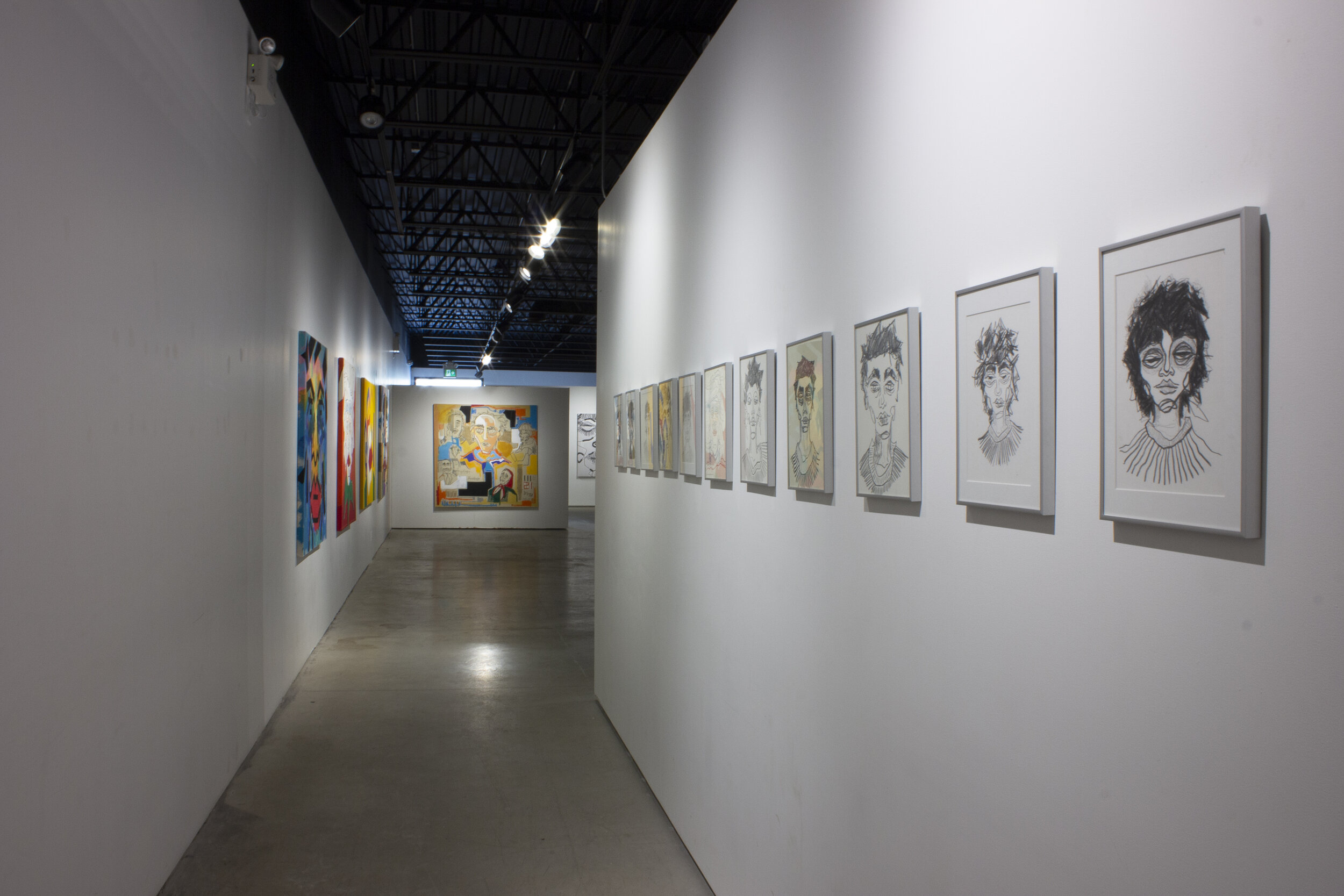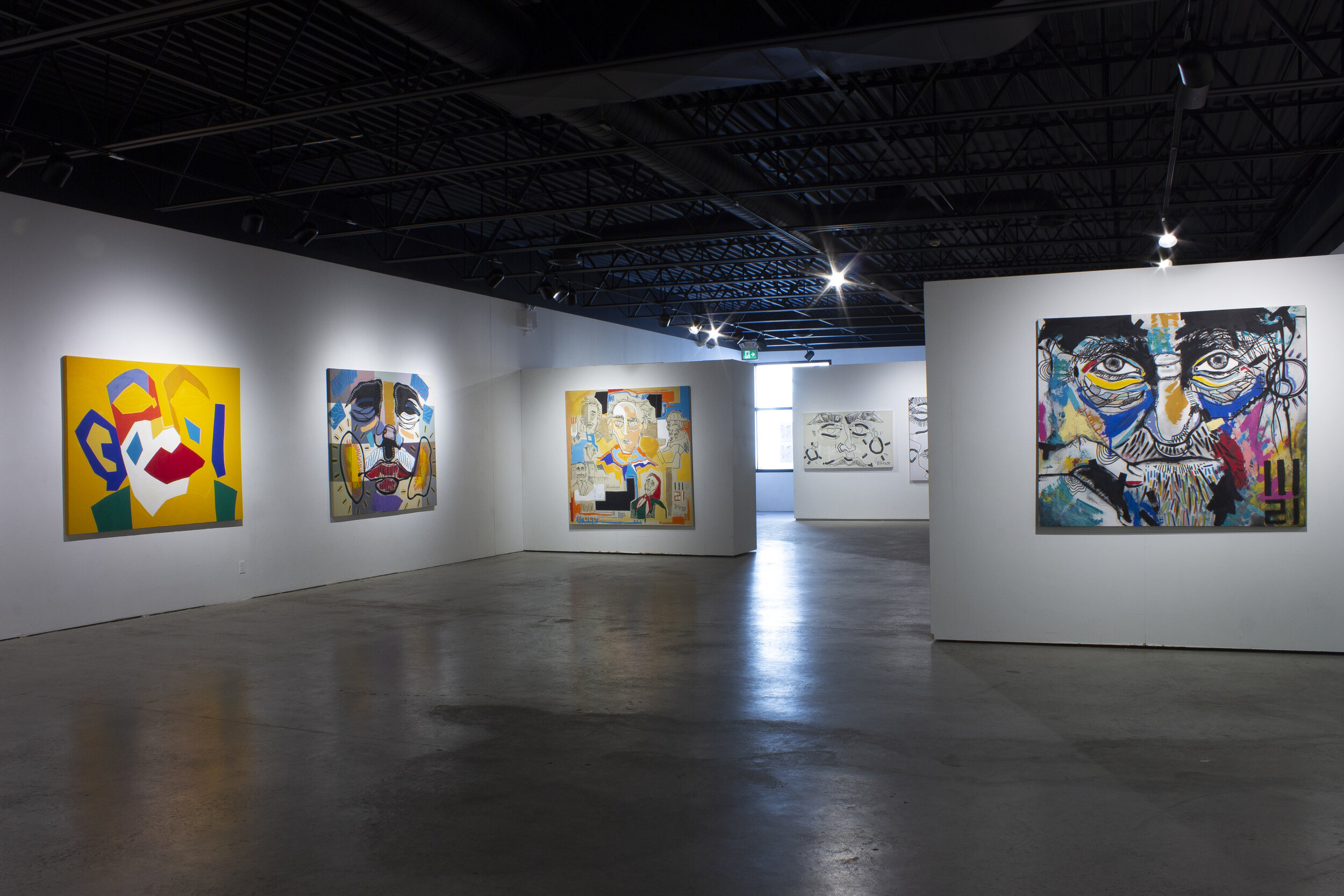BÎSTYEK
Bistyek is the first ever exhibition by the eponymous self-taught artist. Originally from Afrin, Syria, his family fled to Lebanon at the onset of the war, and lived there until three years ago when he, his mother, and his brother moved to Winnipeg, MB and were granted permanent citizenship. There are several aspects to his journey that make this exhibition important, but even without understanding that the artist is himself a refugee, the emotion in each of these paintings is clearly conveyed. They are intuitive works, created through a stream of consciousness process. The portraits are on occasion referring to specific people from his life, but more often based on memories of people he has encountered. With no training, and a very limited (essentially non-existent), knowledge of the canon of art history, the similarities between Bistyek’s work and those of Egon Schiele, Basquiat, even Picasso, are so prominent that it seems he has channeled their energies, or tapped into a past zeitgeist. The works for this exhibition were chosen in an effort to emphasize the stylistic diversity of Bistyek with careful consideration given to the movement of the visitor through the whole gallery. Scale, subject matter, colour, and message were all guiding factors in creating a fully encapsulating experience.
As you enter the gallery, the monochromatic works are a reference to Bistyek’s early days of only owning black and white pastels to create his drawings. Working at a coffee shop in Beirut, he would often draw all day, and set the works outside on the sidewalk. At first it was the coffee that brought people in, then they began asking to buy his work. Even from a young age, Bistyek drew; he drew cartoons to pass the time. He never took a drawing class, just always had the ability to create or recreate images with great skill. This has developed into a lifelong passion.
Moving to the centre of the gallery, the works are various portraits with supremely saturated colours: vibrant yellows, reds, oranges, blues all flow throughout the works. The faces are widely varied in style; some painterly with aggressive brushstrokes, and some minimal in nature. As viewers spends more time with each of the artworks, a pattern of symbols, or ‘moves’ becomes evident. The red kerchief is a nod to his mother, while other faces reference childhood friends. The specificity of who these works are based on is not something that Bistyek easily shares, or even finds to be that relevant to the viewer’s understanding of the paintings. He is concerned with the emotional reaction of the visitors, with little to no details revealed. Of the close to 150 paintings he has created in the last year or so, perhaps 10 have titles. This is intentional. It has nothing to do with language barriers - Bistyek speaks English exceptionally well, in spite of it being his third language (Kurdish and Arabic are first and second respectively). As a way to curatorially respect, and emphasize the wishes of the artist, no labels, and no didactic panels are included.
The back of the gallery is used to situate and contextualize the faces that fill the walls before it. This segment of his work is the narrative of Bistyek’s experiences. These paintings reveal scenes and memories of the people who struggled alongside him, and in some cases, those who enforced this need for survival. Police, adversaries, and soldiers flanking scattered faces of refugees is a common theme in the narrative works. It is interesting to note again, the diversity of colour palettes. Some are muted beiges and greys, painted onto stitched fabrics, and drawn with graphite so lightly that it is difficult to see what is actually happening. Two of the most recent large scale works hangs on the back walls directly across from each other – one brightly coloured, every inch of fabric covered with faces - while the opposite wall holds a quiet, subdued work.
This exhibition was a necessary project for the artist to be able to move forward and begin to focus on new subject matters and methods. Having painted nearly every day over the last year, exhibiting this work was the final step in getting the images out of his head and heart. It has been an honour to work with him, to share his story, and to contribute to the undoubtedly exceptional career Bistyek has just begun.
Lisa Kehler, Curator











